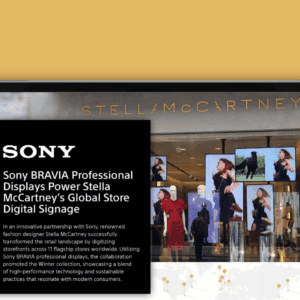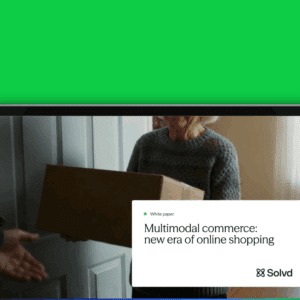
Procter & Gamble has introduced a Direct-to-Consumer (DTC) subscription service for its Tide brand, giving shoppers the opportunity to get regular deliveries of Tide Pods laundry detergent. The jump into DTC sales from P&G sends a signal that these brands would like to bypass the traditional retail model, in part to learn more about shopper behaviors themselves.
With the proliferation of IoT technology, brands such as P&G may have an easier time taking the DTC subscription route, as long as they can time deliveries correctly. From the retailer side, Amazon already has set a precedent for this with the introduction of Dash buttons.
The RTP editorial team discusses how retailers and brands can continue to collaborate and compete at the same time as new technology such as IoT makes it easier for brands to go Direct-to-Consumer. With this dynamic in play, should retailers fear their own CPG partners more than Amazon?
Debbie Hauss,
Editor-in-Chief: The entire evolution of retailer-supplier collaboration
has been fascinating to me in recent years. In the past, retailers were
extremely reluctant to share customer or sales data with their CPG suppliers.
Then they slowly came around to realizing the benefits of collaborating, which
can help boost revenue, sales and loyalty for both partners. So just when they
were getting used to the idea of sharing data, the CPG brands have found new
ways to sell direct-to-consumer, creating increased competition with their
retail partners. And the competition is heating up even more with the
introduction of IoT. For retailers, they may need to put a much stronger focus
on private label brands as a way to increase overall revenue and brand loyalty.
Additionally, the CPG companies may look to offering different SKUs to their
retail partners vs. their direct-to-consumer efforts. It’s going to be an
interesting balancing act, because retailers and brands definitely need to
continue to collaborate as they compete.
Adam Blair, Executive Editor: It’s hard to be
against Internet of Things (IoT) applications that offer automatic
re-ordering of commodity items such as laundry supplies. Retailers that attempt
to “fight” such applications are likely to be seen as both
anti-convenience and anti-consumer. It would be much better for retailers
to seek out alliances with appliance manufacturers and other IoT leaders
now, so that they can get a head start on figuring out how to do what
they have always done best: add value to each transaction. In addition, I find
it interesting that the RetailWire discussion focuses on the data Procter
& Gamble will be able to collect with its subscription service. CPG
manufacturers have always been hungry for the kind of individual, granular
customer data that retailers have traditionally gathered themselves (and that
retailers have usually kept close to the chest). Perhaps this data is the
real prize here, offering more value to both parties than the opportunity to
sell a few more boxes of Tide.
David DeZuzio,
Managing Editor: The last thing retailers needed to worry about at this
point was more brands going direct-to-consumer. Depending on how retailers make
their next move, this is either a total end-of-days situation that will bury
them, as they risk becoming nothing more than middlemen, or it is one extra
slice of disruption that retailers will adapt to. As we’ve seen, retailers have
partnered with Amazon to sell Dash buttons with great results so it is
imperative to embrace new ideas and IoT technology as they won’t be going away
anytime soon. The Dollar Shave Club proved that a new idea, as simple as it
was in hindsight, is not only incredibly desired among customers, but also
very profitable. Convenience is king and customers are proving that every
second of the day by using Amazon Prime, Dash Buttons, and subscription
services. What it all comes down to: direct-to-consumer sales is just another
revenue stream and that’s exactly what they need. It’s every brand for itself
at this point.
Alicia (Fiorletta) Esposito, Content Strategist: Direct-to-consumer and subscription services aim to achieve one thing: make consumers’ lives easier and, in turn, become more top-of-mind for their specific product category. Although on the surface this is a clear threat for retailers, they still have a clear advantage: their stores. At the end of the day, brands benefit from having presence in retail stores. It improves brand awareness and perception, and helps them win sales from consumers who still visit brick-and-mortar stores to do some shopping during the week. Debbie made a great suggestion about retailers augmenting their private-label brands (Target is a great example of this), but it’s beneficial for both retailers and disruptive brands to partner and determine how they can get new products in front of target customers.
Klaudia Tirico, Associate Editor: Retailers can’t deny that new IoT applications and subscription services are in-demand now, so getting on board with these new solutions ASAP should be a priority. Customers demand convenience, and by not providing alternative ways to purchase necessary items at the click of a mouse or, in Amazon’s case, a push of a Dash button, brands may essentially bruise the customer’s experience and loyalty potential. Dollar Shave Club is just one example, but there are many other subscription services — such as SOMA and LOLA — that provide the convenience that, say, Brita and Tampax, don’t. (SOMA offers water filters by mail, while LOLA sends a monthly or bi-monthly box of natural tampons to the customer.) It’s only a matter of time when more disruptors such as SOMA and LOLA will hit the market, and by then it may be too late. Debbie’s suggestions for retailers to put their focus on private label brands, and CPG companies to offer certain SKUs to retail partners vs. their direct-to-consumer channels, are a great start. I have no doubt that there are strategies that will benefit everyone, it’s just a matter of retailers and brands working closely together rather than competing against each other.
Glenn Taylor, Associate Editor: The opening of the e-Commerce floodgates has made CPGs more of a threat to retailers, as its easier than ever to open up shop to sell products. This means getting the first mile of the supply chain correct is more vital than ever, at a time when the consumer simply wants the item wherever and whenever they please. Regardless of where the product is coming from, frictionless retail is the name of the game. Naturally, the supply chain would be quicker with the elimination of the retailer altogether, but Amazon has clearly shown that this is not always necessarily the case. It really comes down to the ability to scale fulfillment. Also let’s keep in mind: product content matters in customer engagement. A survey from Consumer Goods Technology and Gladson indicated that 57% of manufacturers provide some form of value added content on their site, such as recipes and product reviews, but only 40% of retailers’ sites show the same content — even though they’re both in the business of selling products to consumers. As retailers strive to win this battle versus CPGs, they need to understand that the consumer is going to want every bit of information possible when making a purchase decision online.






